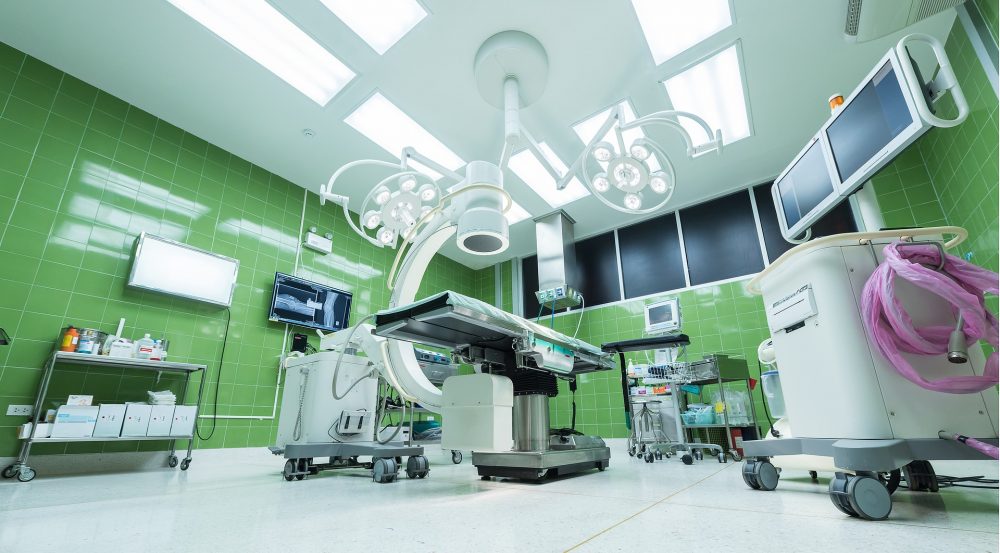According to the Health and Safety Executive (HSE), there were 561,000 non-fatal injuries at work in the UK between 2022 and 2023. That roughly equates to a workplace accident every minute, many of which require an investigation. The following guide outlines the steps to take when investigating workplace accidents, as well as how to avoid a repeat of similar incidents in future.
Workplace accidents can be reduced by following a set of steps, starting by addressing the issue promptly, with a thorough and fair investigation. Understanding what went wrong and implementing corrective actions can prevent the same accident happening again.
It’s important to remember that although there is no statutory or legal obligation on an employer when it comes to investigating workplace accidents, it is best practice to do so. Any employer that fails to follow the guidance of the Advisory Conciliation and Arbitration Service (ACAS) on conducting workplace investigations will leave themselves open to criticism by employees, representatives and Employment Tribunals if cases are badly handled.
Additionally, under the Health and Safety at Work Act (HSWA) 1974, employers have a legal duty to ensure, as far as reasonably practicable, the health, safety and welfare of their employees. This means taking steps to prevent accidents from happening in the first place.
As an experienced workplace investigator, we have extensive knowledge of investigating accidents in the workplace. If you need assistance with a workplace accident investigation please get in touch or book a free consultation.

What is a workplace accident?
A workplace accident as any unplanned incident that occurs during work time and results in injury or ill health. Workplace accidents come in many forms ranging from a minor slip to a more serious incident involving machinery or damage to property.
A close call which doesn’t result in any actual harm is called a ‘near miss’ which also requires investigation because it acts as a warning sign. Investigating near misses promotes a safety culture, helping to identify systemic issues so that corrective actions can be taken to prevent future accidents.
Why is it important to carry out a workplace accident investigation?
A fair and thorough investigation is crucial when it comes to workplace accidents, for several reasons:
- A thorough investigation helps to identify root causes for why something went wrong to prevent similar incidents happening again, such as underlying problems in procedures, training, or equipment.
- Investigations can have emotional repercussions, and carrying them out fairly helps to protect everyone involved so that corrective actions can be put in place without bias.
- As well as this a fair investigation is an important aspect of developing a Just Culture which can boost employee morale and trust by showing the company takes safety seriously.
A thorough and well documented investigation can be vital evidence in legal cases by demonstrating the company took reasonable steps to ensure workplace safety.
Workplace Accident Examples
Workplace accidents can occur across various industries and encompass a wide range of incidents. Here are some common examples:
- Slips, trips, and falls are the most frequent type of workplace accident, often caused by wet floors, uneven surfaces, clutter, or inadequate footwear.
- Overexertion injuries such as lifting, carrying, or pushing heavy objects can lead to muscle strains, sprains, or even hernias, particularly if proper lifting techniques aren’t followed.
- Falling objects can cause accidents on construction sites, warehouses, or even in office settings if items are improperly stored on shelves or overhead compartments.
- Machinery can result in serious injuries if operated without proper training
- Repetitive strain injuries (RSIs) are common in assembly line work or data entry jobs, developing over time due to prolonged awkward postures or repetitive motions.
- Industries such as healthcare can incur incidents caused by exposure to hazardous materials, leading to potential health problems.
- Workplace violence is less common but can occur in various settings, from healthcare facilities to retail stores, ranging from verbal abuse or threats to physical assault.
The specific types of accidents will vary depending on the industry and work environment. By understanding these factors and the specific risks associated with your industry and work activities, you can take proactive steps to prevent accidents and create a safer work environment for your employees.
What are the causes of workplace accidents?
The aim of an accident investigation is to find the root cause so that preventative measures can be put in place. The causes of a workplace accident can be broadly categorised into unsafe acts, unsafe conditions and individual susceptibility.
Unsafe acts
Unsafe acts which can lead to accidents include human error arising from fatigue, complacency, or simply not following safety procedures. Another example could be working under the influence of drugs or alcohol which can significantly impair judgement and reaction times.
As well as this, a lack of training or knowledge where employees don’t know the proper way to do a task or the safety hazards involved, increases the risk of accidents.
Unsafe conditions
These include physical hazards such as improperly maintained equipment, cluttered work areas, poor lighting, uneven surfaces, or exposure to hazardous substances like chemicals or fumes. Work organisation issues can also lead to accidents, including poorly designed work processes, inadequate staffing levels, unrealistic deadlines, or fatigue due to long working hours.
Environmental factors can also lead to accidents, such as extreme temperatures, loud noise, or poor ventilation which can create undue stress and increase the risk of mistakes.
Individual Worker Susceptibility
The susceptibility of individual workers such as pre-existing health conditions can make workers more vulnerable to specific workplace hazards. High levels of stress or fatigue can also lead to inattention and poor decision-making, impacting safety.
How to know which accidents to investigate
It may not always be possible to carry out an investigation for all accidents and incidents. The Health and Safety at Work etc Act 1974 places important duties on employers to ensure a safe workplace. However, these duties are balanced by a key principle: “so far as is reasonably practicable.” This means employers don’t have to implement measures that are technically impossible or where the cost, time, or difficulty outweighs the risk itself.
Very minor cases may not need a written report, while incidents in high-risk environments should always be investigated and documented thoroughly.
How to carry out a workplace accident investigation
Comprehensive guidance is available from the Advisory Conciliation and Arbitration Service (ACAS) on how to conduct effective workplace investigations. The guidance shows the key phases involved from organisational and investigator preparation, through to how to handle investigation meetings, evidence gathering and report writing.
Investigations can be carried out by internal members of staff with the size of the team appointed proportional to the severity of the incident. However, appointing an independent workplace investigator helps to promote positive workforce relations by maintaining consistent and fair treatment of employees involved in investigations. Not only this, it can help prevent bad decisions being made during the investigation that may be criticised in an Employment Tribunal in the event of a claim.
When it comes to investigating an accident, there are certain steps which should be followed to ensure a fair and thorough investigation.
Ensure the site is safe and secure
The first priority is to ensure the accident site is safe for everyone. This may involve shutting down equipment, cordoning off the area, and preserving any physical evidence. If there are injuries, ensuring employees receive appropriate medical care is paramount.
Defining the scope of the investigation
The next step is to clarify the scope of an investigation. This is an important step in ensuring that the investigation is conducted fairly and effectively. As well as helping to maintain objectivity of the investigation, it confirms what to expect from the investigation, and what the possible outcomes may be.
Assemble an investigation team
Deploying people quickly to your investigation is vital as is maintaining confidentiality for those involved. At this stage it’s important to establish clear protocols to ensure everyone feels comfortable cooperating. It is beneficial to assemble team members who are trained in the investigation process and have experience of management, legal and human resources issues as it ensures consistent approach to the investigation process.
Gather, record and evaluate the evidence
Conducting unbiased interviews with all relevant parties, including the injured, witnesses, and anyone potentially involved, is vital for piecing together the events leading to the accident. This includes meticulously collecting and documenting all physical and digital evidence related to the accident such as photos of the scene, damaged equipment, or witness statements.
It is also necessary to review documentation such as any relevant company policies, procedures, and safety manuals to identify any potential gaps or areas for improvement.
Make findings and draw conclusions
Objectively analysing all the gathered information can take time but is a vital step in identifying the root cause of the accident, not just the immediate trigger. The aim of this is to identify any underlying problems with training, procedures, or equipment that may have contributed to the accident.
Make recommendations and reporting the outcomes
A clear and comprehensive report should be prepared outlining the investigation’s findings, supported by documented evidence. Based on the analysis, the report can recommend specific and actionable recommendations to prevent similar accidents from happening again.
Here at Verita, when carrying out an investigation we follow the same key steps to ensure we take a comprehensive, consistent and managed approach to delivering the best outputs for our clients.
How should human performance and human factors be considered?
Human performance issues are common root causes of workplace accidents. These can include individual factors such as fatigue, stress, skill level and resilience, as well as environmental factors including workplace culture, equipment and workload. Task-specific factors also play an important part, such as time constraints, repetitiveness and whether it is complex or novel requiring adaptation.
But looking solely at human performance isn’t enough to reduce accidents at work. While it’s true that fatigue, stress, lack of skill, or poor decision-making can significantly increase accident risk, even the most skilled and focused worker can be involved in an accident due to inadequate equipment, poorly designed processes, or unforeseen circumstances.
Human factors takes what we know about human performance to improve the design of machines, equipment, work environments, procedures and anything else involving human interaction, so that the chances of a workplace accident is reduced.
Accident Investigation Training
It’s important that those carrying out the investigation are properly trained with a thorough understanding of the investigative process. Workplace investigation training is of great value to any organisation that wants to create a safe, positive, and productive work environment. Line managers and HR advisors who are involved in the management of workplace accident investigations would benefit from training.
Drawing on our extensive experience in investigating workplace incidents, we provide a workplace investigation training course which provides valuable insight on how to manage accident investigations.
The course helps to understand the role and responsibilities of commissioners and investigators, how to draft good terms of reference, how to select the investigator or the investigation team, the types of evidence, and how to gather it, the impact of bias, and how to write reliable investigation reports.

In summary
Some accidents are straightforward and simple to resolve; others can be hugely complex, serious and wide-ranging, possibly involving numerous employees. While accident investigations can be unsettling, they provide an opportunity to learn, grow, and prioritise the well-being of your most valuable asset – your employees.
By uncovering the root causes behind accidents, you can implement targeted preventative measures, safeguard your workforce, and foster a culture of safety. This not only reduces the risk of future incidents but also boosts employee morale and demonstrates your commitment to their well-being. Remember, a safe workplace is a productive workplace, and a thorough investigation is the first step towards achieving that goal.
By following the steps outlined, you can ensure a swift, thorough, and impartial investigation into your workplace accident.
If you need help with a workplace accident investigation, or would like to know more about our workplace investigation training, please book a free consultation, or if you prefer, use our contact form, or contact Ed Marsden on 020 7494 5670 or [email protected].








